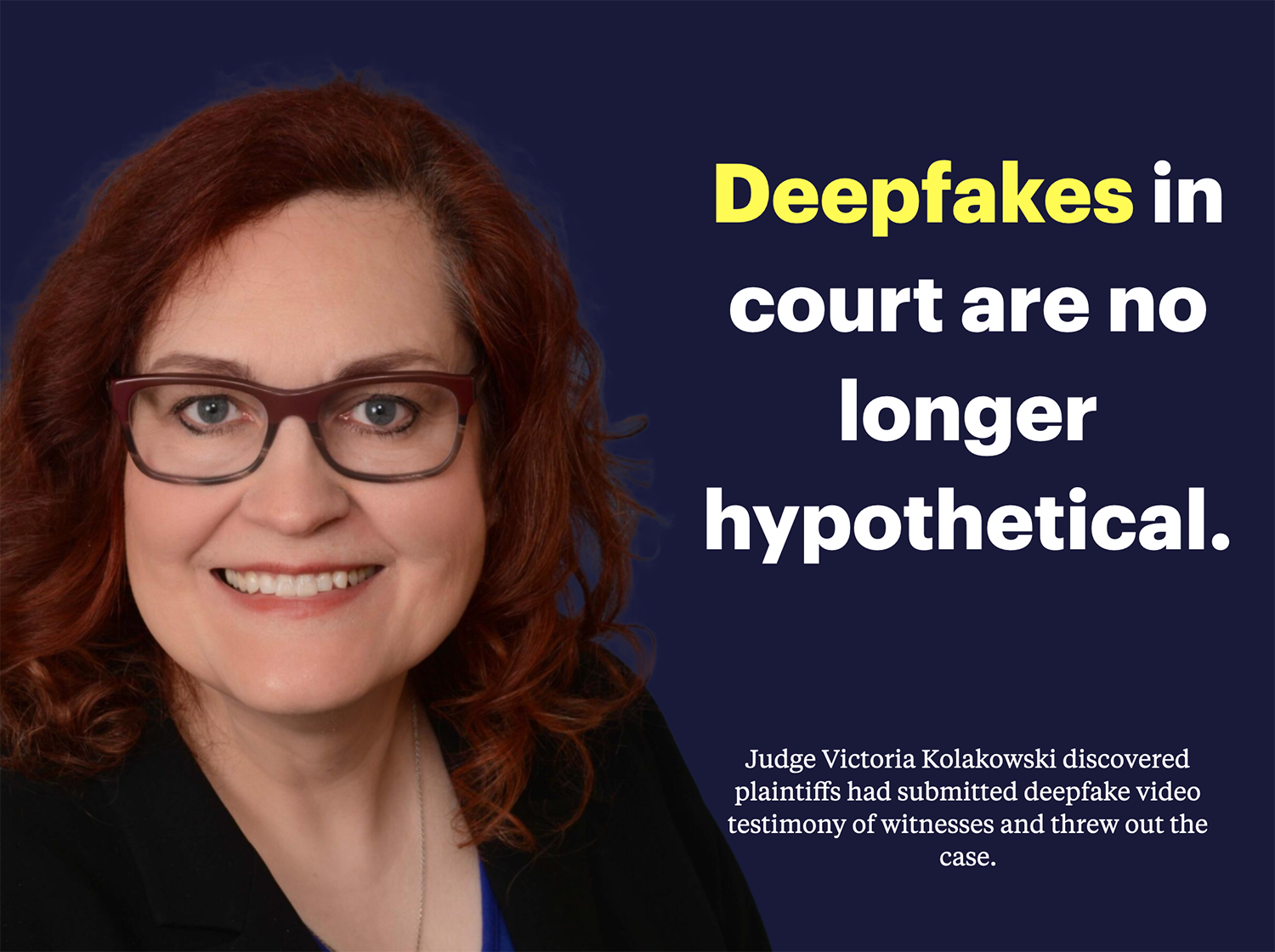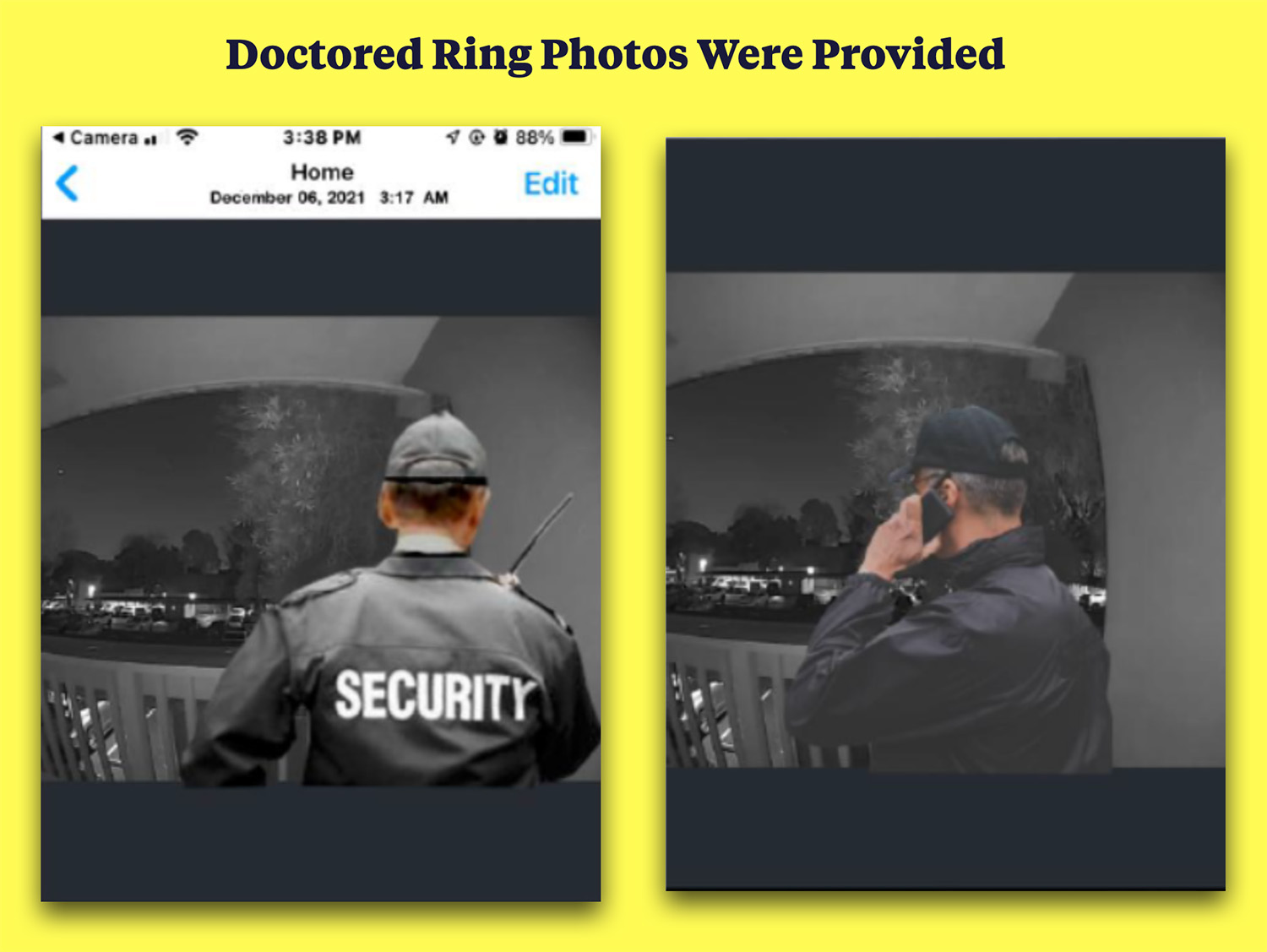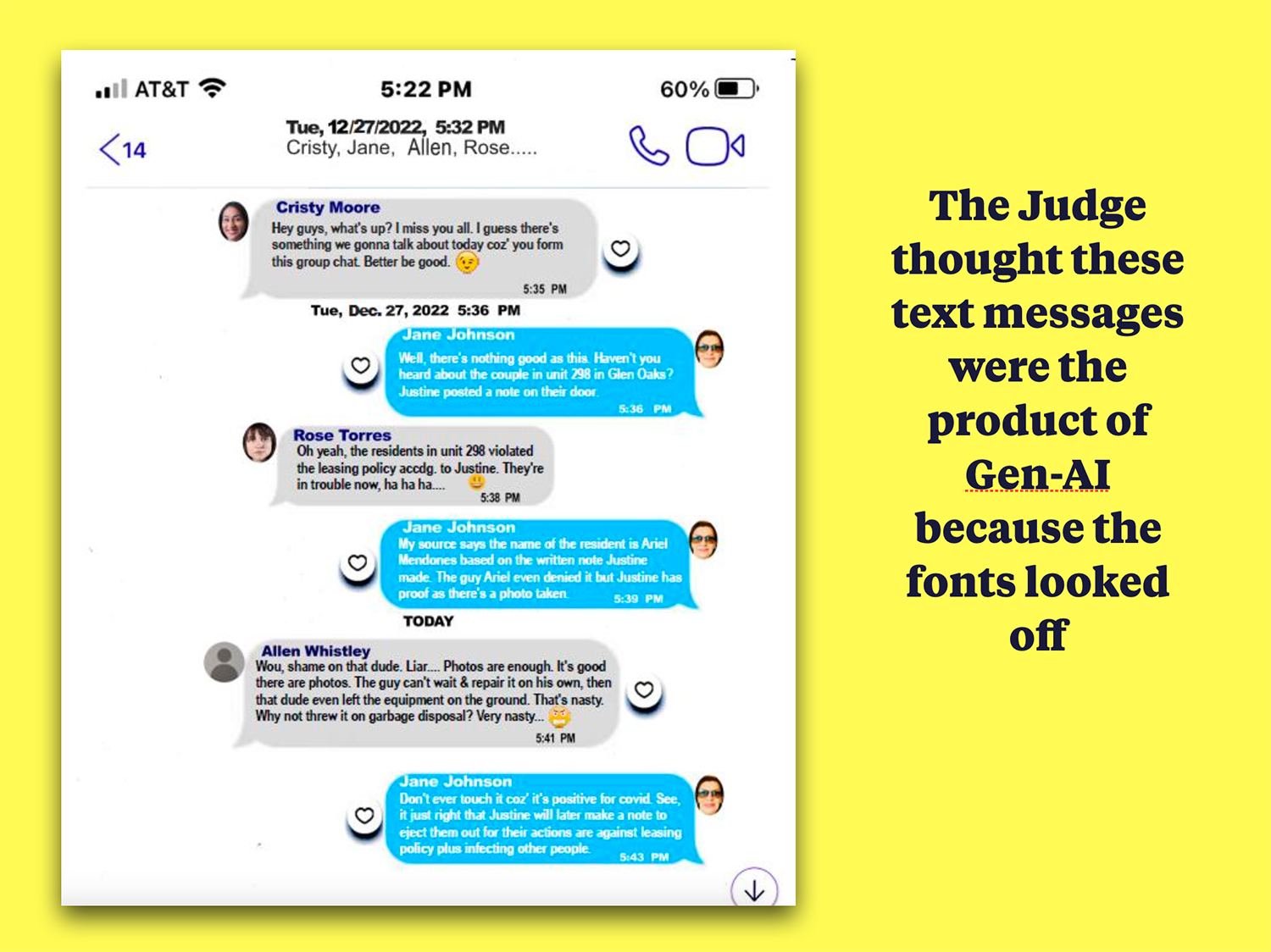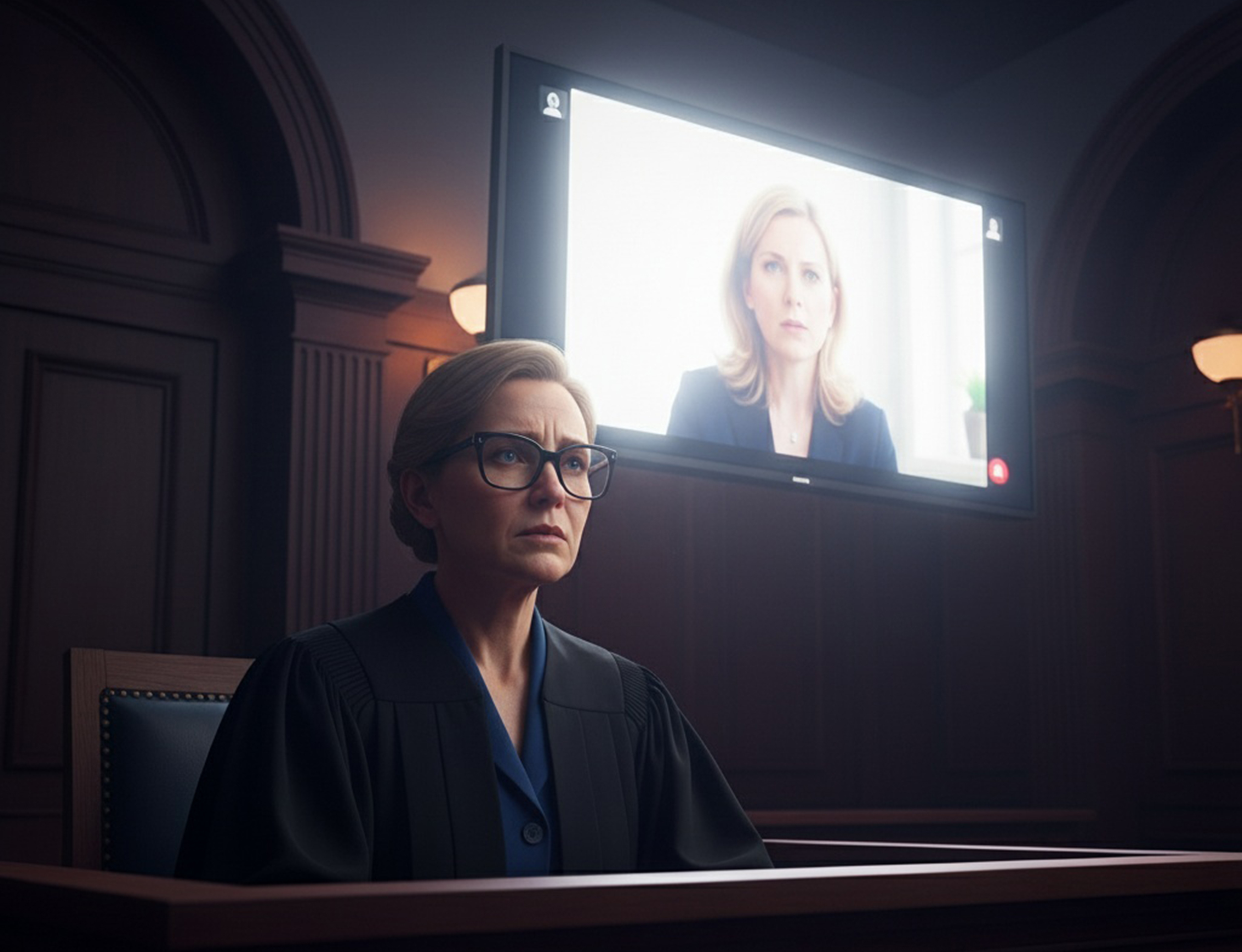The video looked real at first, but to Judge Victoria Kolakowski something just seemed off.
A witness named Geri Haas appeared to be giving video testimony that could would help a couple win a $8.7 million lawsuit against their property management company. But it just looked weird.
The judge watched the video again. The woman in the video spoke like a robot. Her lips moved out of sync with her words, like a badly dubbed movie. Her face didn’t ever change expression, and she never blinked. When the judge compared the video to a real one of the same witness that was taken earlier, she realized she was looking at a complete deepfake testimonial.

A First Ever – $8.7 Million Lawsuit Thrown Out
On September 9th, Judge Kolakowski did something that has never been done before. She threw out an entire lawsuit after discovering that Ariel and Maridol Mendones (the plantiffs) had submitted nine pieces of fake evidence, including deepfake videos, doctored photos, and fabricated text messages to try to win their court case.
In her ruling she issued a warning – “Use GenAI with great caution”, and it appears that this case is sending shock waves through the judicial system as deepfakes are pervading every aspect of our lives.
Fake Evidence Fooled No One – Bad Deepfakes
Ariel and Maridol Mendones sued their former property management company Cushman and Wakefield over a tenant dispute. They chose to represent themselves in court. And that might have been their first mistake.
To bolster their case, the submitted several videos of a woman named Geri Haas who was another tenant in the building. In one of the videos Haas spoke normally, but in the other videos Haas spoke in a monotone and robotic voice and the lip synching was completely off. The words did not match the mouth.
The poorly made deepfakes were made all the more strange when the plantiffs told the judge that some of the witnesses were deceased.
Another video was equally as bad as the first of the witness
Doctored Photos And Text Messages Also Used
The deepfake videos were not the only problem. Doctored photos and text messages also were introduced.
The couple submitted photos from a Ring doorbell camera that looked weird. A man had been digitally pasted into the images, appearing in full color while the background was black and white. It looked like someone had cut out a picture from one photo and glued it onto another.

Text message screenshots were also provided that had tons of red flags. The couple claimed one image showed Instagram messages and another showed a Zoom chat, but both had identical menu bars at the bottom. The fonts appeared distorted as if someone had typed them up rather than taking real screenshots.

“Did You Use AI?”
After 5 months of investigating the case, the judge was convinced that things just weren’t right.
She ordered the couple to answer three questions under oath – 1) Did you use AI? 2) Did you edit photos? and 3) What messaging apps did you use? She also demanded technical details about how the videos were created.
The response to the judge from them did not surprise her. Maridol admitted “artificial intelligence was used in video exhibits” but she tried to blame witness Geri Haas for providing the fake videos to her.
The judge didn’t buy it at all. When the final hearing came on Sept. 9, both plaintiffs failed to show up. The judge dismissed their case entirely.



